87 F. high temperature Tuesday in St. Cloud.
83 F. average high on July 19.
83 F. high on July 19, 2015.
July 20, 1951: A tornado hits Minneapolis and Richfield, killing five people.
July 20, 1909:
10.75 inches of rain falls in 24 hours at Beaulieu in Mahnomen County.
This record would stand for over 50 years. Bagley receives an estimated
10 inches.
Excessive Heat Warning Posted Thru FridayHere's
a forecast with rare 100 percent accuracy. Men will sweat. Women will
glow. Dogs will pant. All of us will wonder (out loud) how Minnesota can
possibly get this hot? 5 months ago some of us were driving on area
lakes. Now they're an inviting refuge from jungle-like heat.
An Excessive Heat Warning means a significant risk of heat-related ailments into
Friday.
The ill and the elderly are most vulnerable. Staying hydrated and
avoiding afternoon sun helps, but the threat is real. We're just not
acclimated to this level of heat and humidity, more typical of the
Middle East than the Midwest.
Reminder: check on friends and
family, don't even THINK about leaving kids in the car, and don't forget
about pets! They feel the heat as much as we do.
The arrival of
tropical heat sets off a few T-storms today; enough afternoon sun for
low 90s with a heat index of 100-105F. Mid 90s and a dew point near 80F
tomorrow (ack!) will make it feel like 110F by the dinner hour.
Severe storms on
Saturday mark the leading edge of sweet relief. Low 80s early next week will feel like a vacation.
Heat Index Peaks Thursday.
The combination of 90s and excessive dew points (near or above 80F)
reaches a nasty zenith Thursday evening, when it may feel like 110F out
there. Time to drag the sofa into the nearest pond or lake. Meteogram:
Aeris Enterprise.
What Makes This Heat Spike Different.
It's been hotter in the past, much hotter, in fact. But it's
exceedingly rare to see dew points at or above 80F. That's what the
ECMWF (European) model and some of NOAA's models are predicting for
Thursday evening; ghastly humid. Like something you might find in the
Persian Gulf or Bora Bora. 7 pm predicted dew point on Thursday: NOAA
and WeatherBell.
3 Sweaty Days, Then Weekend Relief.
We can and will get through this sauna-like stretch for 72 hours, a
wind shift pulling cooler, Canadian air south over the weekend; high
temperatures next week much closer to average for this time of year.

THE NATIONAL WEATHER SERVICE TWIN CITIES HAS ISSUED AN EXCESSIVE HEAT WARNING...
WHICH IS IN EFFECT FROM 1 PM WEDNESDAY TO 7 PM CDT FRIDAY. THE EXCESSIVE HEAT
WATCH IS NO LONGER IN EFFECT.
* TEMPERATURES: HIGHS IN THE MID 90S AND LOWS IN THE MID 70S...
TO POSSIBLY LOWER 80S IN THE TWIN CITIES METRO AREA.
* DEW POINTS: 75 TO 80 DEGREES...LOCALLY HIGHER.
* HEAT INDICES: WIDESPREAD 100 TO 110 DEGREES...LOCALLY HIGHER.
* IMPACTS: A HEIGHTENED RISK OF HEAT RELATED ILLNESS...
ESPECIALLY FOR THOSE ACTIVE OUTDOORS OR FOR THOSE WITHOUT AIR
CONDITIONING.
* TEMPERATURE...HIGHS IN THE MID TO UPPER 90S AND LOWS IN THE MID
TO UPPER 70S...TO POSSIBLY LOWER 80S IN THE TWIN CITIES METRO
AREA.
* IMPACTS...A HEIGHTENED RISK OF HEAT RELATED ILLNESS...
ESPECIALLY FOR THOSE ACTIVE OUTDOORS OR FOR THOSE WITHOUT AIR
CONDITIONING.
Preparations Before Extreme Heat. Here are a few bullet points from some timely reminders at
ready.gov:
- Cover
windows that receive morning or afternoon sun with drapes, shades,
awnings, or louvers. (Outdoor awnings or louvers can reduce the heat
that enters a home by up to 80 percent.)
- Keep storm windows up all year.
- Listen to local weather forecasts and stay aware of upcoming temperature changes.
- Know
those in your neighborhood who are elderly, young, sick or overweight.
They are more likely to become victims of excessive heat and may need
help.
- Be aware that people living in urban areas may be at
greater risk from the effects of a prolonged heat wave than are people
living in rural areas.
Dangerous Heat Wave to Scorch U.S. No kidding. Here's an excerpt from
USA TODAY: "
Temperatures
over 100 degrees and brutally high humidity will combine to deliver a
potentially dangerous heat wave to much of the central and southern U.S.
this week. "This may be one of the worst heat waves in the last few
decades," the National Weather Service warned. Some 130 million Americans will endure heat indexes of at least 100 degrees, according to the Weather Channel..." (Thursday GFS temperature anomaly:
Climate Reanalyzer).
 Is "Corn Sweat" Making The Heat Wave Worse?
Is "Corn Sweat" Making The Heat Wave Worse? Probably, by at least a couple of degrees. Angela Fritz explains at
Capital Weather Gang: "...
Corn
sweat is an extremely simple way of referring to evapotranspiration,
the process by which moisture in plant leaves evaporates into the air.
Plants draw water out of the ground through their roots for
photosynthesis, and the water in the plant cells is exposed to the air
once it gets above the ground. It evaporates off the leaves just as
sweat evaporates off our skin — although it doesn’t take place to
keep the plant cool, like it does for us. So evapotranspiration is not
making things hotter. But it is making things more humid — which
can certainly be just as bad..."
Map credit: "
Corn acreage by county in 2015." (USDA).
Florida Tops Nation in Deadly Combination of Heat and Humidity. No big surprise here, if you've ever been to Orlando in August. Here's an excerpt from The Miami Herald: "As
climate change warms the planet, you can bet Florida will feel the
heat. The sunshine state, according to a study released Wednesday by
Climate Central, tops the nation in the number of metro areas expected
to see a dangerous combination of heat and humidity, driving heat index
temperatures to 104 degrees. By 2050, all 13 cities on the list,
including Miami, Tampa, Naples and Vero Beach, will see 100-plus days a
year of the miserable mix that can cause a host of health problems and
even death — meaning more weather that feels like South Florida’s last
few sticky, searing weeks... (Image credit: NASA).
Hottest June on Record, Worldwide. Continuing the trend. Here's an excerpt from
HotWhopper: "
According to GISS NASA,
the average global surface temperature anomaly for June was 0.79 °C,
which just pipped June 2015 (0.78 C) and June 1998 (0.77 °C). Last month
is only the second time in nine months that the GISTemp monthly anomaly
is less than one degree Celsius above the average from 1951-1980. It
probably won't be the last, now that El Nino is over. The average for
the six months to the end of June is 1.09 °C, which is 0.28 °C higher
than any previous January to June period. The previous highest was last
year, which with the latest data had an anomaly of 0.81 °C...."
Graphic credit: "
Global mean surface temperature, progressive year to date to June 2016." Data source.
GISS NASA
 Arctic Sea Ice Falls To Record Low in June.
Arctic Sea Ice Falls To Record Low in June. Here's the intro to a story at
UPI.com: "
Sea
ice cover in the Arctic beat a hasty retreat throughout June, reaching
record-breaking levels by month's end. Data published by the U.S.
National Snow and Ice Data Center last week showed average sea ice
extent for June was 100,000 square miles smaller than in 2010, the year
of the previous June record. Almost every month this year has set new
record lows for sea ice extent. March, however, was the second-lowest,
slightly greater than 2015. The average sea ice extent for June was 4.09
million square miles..."
Photo credit: "
Sea ice patterns in the Arctic Ocean." Photo by Kathryn Hansen/NASA
Read more here: http://www.miamiherald.com/news/local/environment/article89216662.html#storylink=cpy
Flame Broiled Alaska: With Soaring Temperatures and Crackling Lightning, Wildfires Erupt Across the State. Here's an excerpt from Discover Magazine: "After
months of record-setting warmth culminating in extremely
high temperatures last week, much of Alaska was primed for wildfire.
Things had been quiet until then, despite the warmest January through June period
in Alaska since 1895. Then the lightning came — with a sudden
vengeance: some 45,570 strikes between July 13 and 16th. The result:
Flames finally exploded through Alaskan landscapes, with 114 new
wildfires resulting in a more-than-100,000-acre increase in the total
number of acres burned in Alaska this season, according to the Alaska Division of Forestry..."
Image credit: "
Natural and false-color satellite views of wildfires in Alaska on July 15th, 2016." (Source: NASA Worldview).
30th Anniversary of the KARE-11 (Sky 11) Brooklyn Park Tornado.
Where were you when this thing popped up on TV? Chance are you
remember. I know where I was, in Studio A at KARE, watching the
jaw-dropping live video from photographer Tom Empey and Sky 11 pilot Max
Messmer. Tom was testing out a new "gyro-zoom lens" on his video
camera, which enabled him to capture smooth imagery, without the normal
vibrations found in a chopper. The result was an almost hypnotic video
narrative that left viewers spellbound, providing raw footage for
tornado researchers worldwide. Here's a link to tornado video highlights
from KARE-11: "
It was 30 years ago today when KARE 11's helicopter
Sky 11 captured unbelievable footage of a tornado moving through
Fridley. The video, which was broadcast live during the 5 p.m. news,
soon went global -- giving viewers a rare look at a twister from an
above-ground vantage point. KARE's then-chopper pilot Max Messmer and
photographer Tom Empey were sent to capture some footage, after covering
the first day of the Minneapolis Aquatennial but the destruction and
intense viewpoint they discovered soon made history. Watch the footage
above, as reported by Allen Costantini on the 20th anniversary."
* The full TV newscast, a news show like no other (ever) is
here, courtesy of KARE-11 and YouTube.
* Check out the new and improved
Springbrook Nature Center
for yourself. This is where the July 18, 1986 tornado spent most of its
time, ripping trees out of the park as if they were weeds. You can
still see some evidence of the tornado, but park staff and volunteers
have done a wonderful job creating a remarkable urban park unlike any
other in the Twin Cities metro.

Deadliest State for Tornadoes? Alabama.
Huh? In its defense, residents of Oklahoma, Texas and Kansas - the
heart of "Tornado Alley" are generally more tornado-aware; it's easier
to spot and track deadly tornadoes on the Plains than hilly, wooded
sections of the Mid South, and many tornadoes east of the Mississippi
are rain-wrapped and very hard to see, especially at night. Throw in
more trailer parks (per capita) and you have a higher overall risk for
Alabama than Oklahoma, according to
KOCO-TV: "
Over
the last 30 years the state with the most tornado-related deaths is
Alabama. Alabama averages 14 tornado-related fatalities each year,
followed by Missouri with eight. Arkansas averages five each year and
Texas, Mississippi, Georgia and Oklahoma all average four. The major
tornado outbreak of 2011 pushed Alabama's and Missouri’s averages way up
with the Joplin tornado responsible for 161 deaths and tornadoes in
Alabama killing 238 on April 27 and 28..." (Map:
NOAA SPC).

Supercell. My thanks to Alan Broerse for passing this amazing image along.
Warming Could Mean More Algae Blooms Like Florida's. Some perspective from
Climate Central: "...
A 2015 study
that Havens co-authored found that 70 percent of 235 freshwater lakes
around the world were warming faster than the oceans. On average, they
have warmed by 0.61°F (0.34°C) per decade over the last 25 years. In
some cases, lakes were warming even faster than the local air
temperature. Florida is a spot where lakes have been warming more
slowly, though why is unclear, Havens said. Warmer water temperatures
could provide a more favorable environment for algae to grow and affect
where they occur, how quickly they grow and how toxic they are. The 2015
study found that such blooms should be expected to increase by 20
percent in lakes..."
Image credit: "
The algae bloom had reached nearly 240 square miles by mid-July. This satellite photo was taken on July 2, 2016." Credit: NASA
Conservative Approaches to Clean Energy: Innovative Solutions for the 21st Century. I'm looking forward to participating in this conference next Monday in Minneapolis, courtesy of
Citizens League.
Where is the common ground? Can we all agree we want more energy, at
less cost, with fewer unpleasant or unhealthy side effects? We want
choice, resilience and alternatives. We hope to see you there: "
You
don’t often hear the terms “clean energy” and “conservative” in the same
sentence, but that hides the fact that a new generation of conservative
policy thinkers have turned their attention to the economics of the
energy marketplace. Both nationally and here in Minnesota conservatives
have been putting some meat on the bones of their “all of the above”
strategy, coming up with innovative solutions to building a 21st century
energy marketplace.
On July 25th the Citizens League
will be joining with the Minnesota Conservative Energy Forum to host an
event featuring both national and state policy thinkers to explore the
growing movement of conservatives embracing both technological and
marketplace innovations in delivering energy to consumers. Join us for
what will prove to be a surprising and interesting conversation...."
Artificial Intelligence Swarms Silicon Valley on Wings and Wheels. Here's an excerpt from an interesting New York Times story: "...Now Silicon Valley has found its next shiny new thing. And it does not have a “Like” button. The new era in Silicon Valley centers on artificial intelligence
and robots, a transformation that many believe will have a payoff on
the scale of the personal computing industry or the commercial internet,
two previous generations that spread computing globally. Computers have
begun to speak, listen and see, as well as sprout legs, wings and
wheels to move unfettered in the world..."
 TODAY
TODAY: Isolated T-storm, steamy with a heat index topping 100F this afternoon. Winds: S 10-15. High: 92
WEDNESDAY NIGHT: Warm and sultry. Low: 79 (may stay above 80F in the downtowns)
THURSDAY: Heat Warning. Sizzling sunshine. Feels like 105-110F. Winds: S 7-12. High: 96
FRIDAY: Plenty of sun, still stinking hot. Still feels like 100F+ Wake-up: 77. High: 92
SATURDAY: T-storms may be severe. Still sticky. Winds: S 8-13. Wake-up: 74. High: 89
SUNDAY: Some relief, few PM showers, lower humidity. Winds: NW 10-15. Wake-up: 70. High: 84
MONDAY: Partly sunny, much more tolerable. Winds: NW 7-12. Wake-up: 67. High: 81
TUESDAY: Mix of clouds and sun, not bad at all. Winds: N 5-10. Wake-up: 65. High: 82
* Rainbow photo credit: The Atlantic.
Climate Stories...

Increased Asthma Attacks Tied To Exposure to Natural Gas Production. InsideClimate News has the story; here's the intro: "
Exposure
to more intense shale gas development correlates with a higher risk of
asthma attacks among asthma patients, according to a new study of
Pennsylvania's Marcellus Shale, one of the nation's largest and most
active fracking regions. The paper, published Monday in JAMA
Internal Medicine, a publication of the American Medical Association,
didn't examine the exact cause of the trend. But lead author Sara
Rasmussen, a Ph.D. candidate in environmental health sciences at Johns
Hopkins Bloomberg School of Public Health, said air pollution and stress
are both plausible explanations..."
Photo credit: "Natural gas operations in Pennsylvania's Marcellus Shale region were studied for ties to increased asthma attacks." Credit: Wikimedia.
All About The Bass. Ask trout fishermen in Montana if things are warming up. Here's an excerpt from
The Economist: "...
For
these fine fishing conditions—with the water running clear after months
of turbid flows from spring snowmelt, and the temperature at 65°F
(18.3°C)—have arrived too early, by some weeks. The water should be ten
degrees cooler, frowns Mr Vermillion, and data retrieved by his
smartphone from a nearby measuring station shows flows at less than half
their historical median level. All rivers vary from year to year. What
worries federal wildlife officials, state biologists and a growing
number of devoted anglers across the mountain West, is that, for the
past 15 years, some of America’s finest fishing rivers keep breaking
records for early snowmelts, too-warm water and low flows..."
Study Role of Climate Change in Extreme Threats to Water Quality. Here's a clip from new research highlighted at
Nature: "...
Because
the most severe water-quality impacts are exacerbated by weather,
climate plays a part. Runoff of nutrients from farmland spikes after
heavy rains; warm temperatures accelerate the growth of bacteria and
phytoplankton. As climate change alters weather patterns and
variability, conditions conducive to severe water impairment are likely
to become more frequent. Yet there has been scant study of how climate
will affect the occurrence of the extreme events that relate to water
quality rather than quantity. We do not know how to relate water-quality
extremes, their causes, their severity or their occurrence directly to
changes in climate. It is time to plug this knowledge gap..."
Photo credit: Greg Lovett/Palm Beach Post via ZUMA Wire. "An algal bloom in Stuart, Florida, in June led to a state of emergency."
For Climate Migrants, Dignity Matters As Much as Safety. Here's an excerpt of a poignant post at
Thomson Reuters: "...
Similarly,
climate risk and adaptation tools should consider not only risks to
life but also risks to dignity, so as to ensure urban resilience plans;
policies and practices don’t trample on the dignity and respect of
people in well-intended efforts to protect lives. In the absence of an
overarching international legal framework for the protection of the
rights and dignity of people affected by climate extremes, the fate of
millions is left to the discretion and capacities of local authorities,
and the objectives of political and religious charities. It is high time
that we push for an international legal framework, on the lines of
human rights law, that has the teeth to push for the rights and dignity
of climate-affected people..."
Photo credit: "
Boys look for recyclable items in the waters of river Yamuna on a smoggy morning in New Delhi, India, December 1, 2015." REUTERS/Anindito Mukherjee.
Most Republicans Who Care About Climate Change are Skipping the Convention.
Grist has the story: "
Most
congressional Republicans with even a hint of moderation on climate
change are distancing themselves from Donald Trump and won’t be present
for his nomination in Cleveland this week. Four of the five Republican
senators with a record of supporting climate action are skipping this
year’s Republican National Convention, which begins on Monday. They are
Sens. Mark Kirk of Illinois, Kelly Ayotte of New Hampshire, Lindsey
Graham of South Carolina, and John McCain of Arizona..."
Photo credit: REUTERS/Rick Wilking.
 Climate Change is Making Farm Work More Dangerous Than It Already Is
Climate Change is Making Farm Work More Dangerous Than It Already Is.
FUSION has an interesting story; here's an excerpt: "...
There can be little argument that farm workers are among the most at-risk. “There is absolutely an association between climate change and the health of agricultural workers,” said Dr. Marc Schenker,
director at the Center for Occupational and Environmental Health at UC
Davis. “The health effects of climate change on workers are diverse, and
range from heat stress to infectious diseases, and possibly kidney
disease...” (Image credit: Omar Bustamante/FUSION).
Gazette Editorial: Floods Part of Climate Change in West Virginia. The
Charleston Gazette-Mail has an Ope-Ed; here's the intro: "
Several
national climate experts said the severity of the Mountain State
devastation during the recent flood was almost certainly worsened by
human-caused global warming. Climate change contributes to more extreme
storms, floods, droughts, wildfires and other weather-related dangers.
That means West Virginia is among the places where effects of climate
change are being felt by people now, not in some distant, hypothetical
future..."
Photo credit: "
A flooded intersection in downtown Richwood on Friday, June 24." Christian Tyler Randolph, Gazette-Mail.
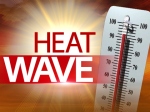
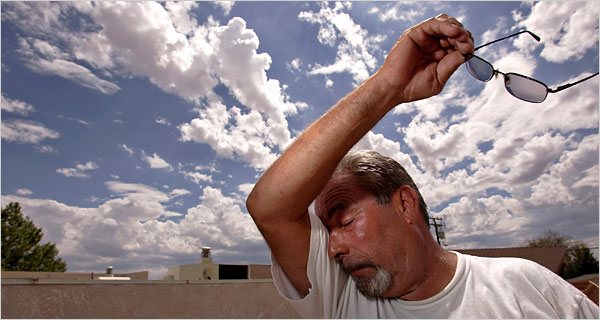
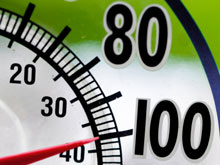

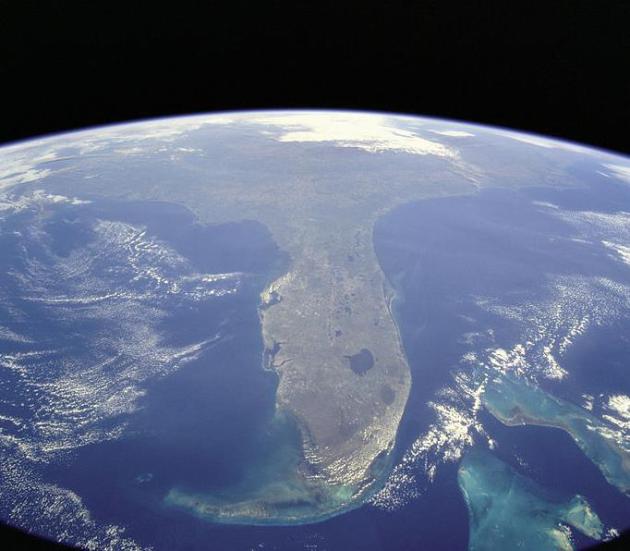
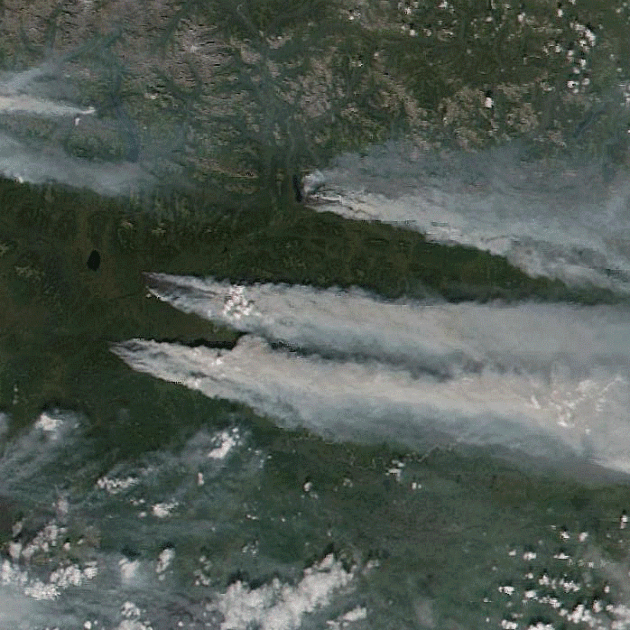
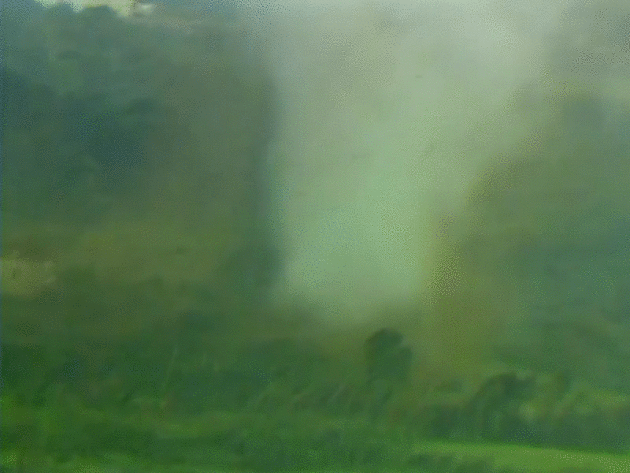
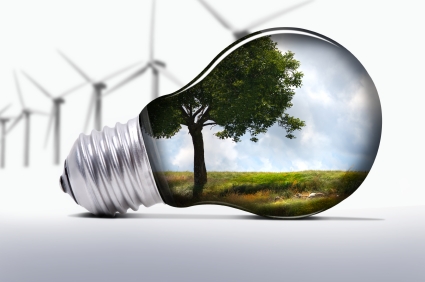
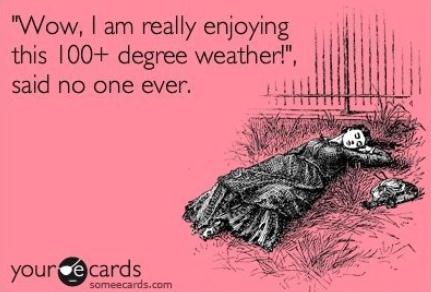
No comments:
Post a Comment